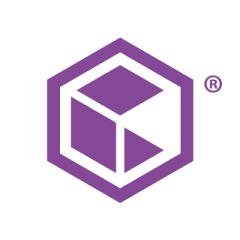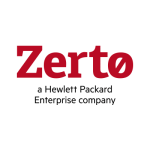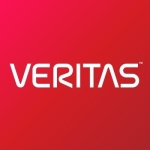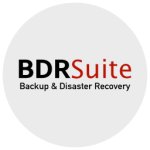What is our primary use case?
How we implement this solution in a government institution is a little tricky; it's more closed. One of our most important use cases is how we protect and back up documents and files from users outside of our building because we must follow security standards. We use only HTTPS protocols, a special proxy server, etc.
How has it helped my organization?
The solution helps our admins minimize the time they spend on backup tasks and to spend that time on other projects. It's not easy to calculate in minutes, but we have found that it's approximately 80 percent faster to do a backup and restore if we need to.
Using Commvault, we have saved on infrastructure costs. Before, we had a few other solutions for backup. Each of them asked for a data store for storage space. Now, with one solution, we have reduced the amount of hard disk storage in our platform. And with Commvault, the file compression is much more efficient than with other solutions. We currently have 50 to 60 TB in our data set, for the entire ministry with 350 users. Before Commvault, we used much more. I would estimate we are saving 60 to 70 percent of the storage we used to need.
I have also cut more than 50 percent of my daily tasks as a result of Commvault. I don't need to worry too much about backups because I know the system will do everything by itself. Every morning I get reports from Commvault and, if there is a problem, I will get a notification in my email. So it allows me to work on other things.
For now, we are very lucky that we have only needed the solution to restore some clients' data. Only once in the three full years that we have been using it did we need to restore our main mail server. There was a problem with the Windows update where the machine would not patch the Windows update and everything crashed. With two clicks we were able to restore the machine live, so we did not have to reinstall the machine. And a few times, Commvault has enabled us to restore a user's data set.
What is most valuable?
The most valuable feature is sharing data sets like they're in a private cloud. We call it our "private cloud" because we can share anything that is inside our backup set with our colleagues or with other people, and yet, everything is still in Belgrade, in Serbia. It's not somewhere else on cloud servers. Everything is in our environment. For example, our inspectors exchange data between themselves, so they put everything in one folder and anyone with rights can see it. That is a feature that we use very often.
Another important feature is the protection against ransomware. If an employee gets a virus on their computer we will not worry about it, or if their computer is hit by ransomware, their data will be protected in the backup. That feature is very nice.
In addition, there is a new feature for GDPR regulations and protecting personal data. We don't use it fully because it's new and we are still experimenting and trying to make things easier for all of us. But we could say, "Okay, this database has some personal data in it so please do extra tracking, ask for more credentials, etc., to be sure that nobody can reach that info unless they're supposed to. That is a very nice feature.
The Commvault Command Center is good. Even when I'm not in the office, I can track and see that everything is okay with my system. The Commvault team uses it for protecting our make system and to make it better. They see the health of the system, what features we use often, or not, to help with right-sizing the software.
Overall, we like the fact that it's a single platform for everything. We have one console that has everything that we need. We can add or remove users, retire a user, add a new server, or even start a backup by itself. We don't need to go to the client's site to fix something. We can do everything from the console, wherever we are. If we need to restore a client's computer, we don't need to go there. It can be done from a local PC. We have 22 locations in Serbia, so it's not possible to visit all of them in one day. We can do everything from our console. The only requirement is that that computer is on, and we can do everything from one place. And with one click we can start a backup procedure for any server we want.
What needs improvement?
As a government office, we think about protecting personal data. Serbia is part of an open government partnership, which is a global project. Commvault should think about protecting open data, especially if there is personal data involved. Perhaps they could divide the data and say, "In this database is personal data and you cannot use it in an open data format."
And they can always improve the interface design to make it easier. Sometimes, you need to click two or three times to do something. They should look at what tabs are used most and make them more accessible, to cut the time it takes to get to that information.
Buyer's Guide
Commvault Cloud
May 2025
Learn what your peers think about Commvault Cloud. Get advice and tips from experienced pros sharing their opinions. Updated: May 2025.
850,671 professionals have used our research since 2012.
For how long have I used the solution?
I have been using Commvault since 2015.
We started by testing the solution with a local company, one of Commvault's local partners, here in Serbia. We first wanted to test how it would really work in our environment. After that, we procured it at the beginning of 2016. So in the summer 2016, we officially used it with our license. Before that it was just testing, tendering, procurement, etc.
What do I think about the stability of the solution?
Every type of software, even Microsoft, has some problems. It's not possible to make something without some patches or little bugs. But until now, over the years we have been using it, we haven't had any big problem where we said, "Oh, this is not working." We have had some problems and opened tickets and support has helped us very fast.
We can say we are generally happy with Commvault. It's not possible to expect to buy something and never have a problem with it. That's especially true when you add something new; it depends on your hardware environment. It also depends on your network and your users' backup behavior. It's not possible that something will be perfect.
What do I think about the scalability of the solution?
For our use, it scales well. They have many solutions, both on-premise and now, with this Metallic software as a service, you can use it on the cloud. So it's scalable. You can choose what you need and deploy it.
As a government institution, we are not allowed to use public clouds. Everything must be in our data center. We can mix in a hybrid solution of private clouds and on-premise, but for now, we only use on-premise.
How are customer service and support?
If we need something, if we have any problems, we can open a ticket and their support will help us, and they do very well. We must send an email to our local partner describing our problem and that we need Commvault support. They send it on our behalf to Commvault. Then Commvault opens a ticket. It's not possible for us to open a ticket directly. We need to go through our local partner. That path works for us.
We're happy with the support we receive from our partner. If it's something smaller, they try to fix it by themselves. But we usually open a ticket, in case something has happened or just to have the possibility of tracking all changes.
Commvault also has a very good portal where users, before opening a ticket, can try to find solutions. If others have had a similar problem, we may learn how to solve it.
Which solution did I use previously and why did I switch?
Before Commvault we had other brands. We use Acronis Backup among others. We wanted to have just one solution for all our needs: for servers, for SQL Server, for laptops, etc. Our partner suggested we try Commvault and we saw that it was a good solution. It really helped us in dealing with backups, so we chose to buy it. Especially when you have public procurement, you cannot say I want to buy this particular solution. So it is tricky to do public procurement and get what you really need.
Our requirements included having one console for all systems. Before, we had Acronis for servers and we had Backup Exec for clients and we had Windows Backup for Windows servers, etc. So the main requirement was to have one place, one console, from which to manage everything: laptops, PCs, servers, databases, and everything. That was the main reason we wanted Commvault.
The second requirement was because we have employees who are outside of Belgrade; they are not sitting in our building. We needed the possibility of backing up their computers, computers that are not in our primary network. With Commvault we managed that very easily.
We now back up more than 70 PCs from our inspectors all around Serbia. With one solution we back up all of them. That was most important because people lose their computers and some computers crash. It was very necessary to have the possibility of protecting their data with a backup solution.
There were other factors as well, like having a partner in Serbia. Also, if we wanted to add new functionality we didn't want to have to buy other software or to experiment. We wanted to be able to just buy a license for the additional things that we needed.
How was the initial setup?
For me, the initial setup was not so complicated, because I'm an IT guy. I understand what is needed. But if I look at it from the point of view of someone else, it's still not too complicated. The documentation is very well written and tells you what you need to do next. Of course, you need to know some rules about backups, but the installation is usually done by guys and girls who are in that field. A regular user will likely never install Commvault by him or herself. And even though I am not a technician and I am not a backup engineer, the setup was okay for me. I was able to understand what the system was asking and what I needed to do.
In terms of how long the deployment took, we tested it just to see if we could back up a part of our database. We have two networks. One is the primary, official, and public network, and the other has secret information. So we tested backing up both of them. Including testing, the deployment took around two months from zero to putting everything on. That also included deploying it on our system, connecting it with our storage, our databases, and installing it on some clients to see how the clients work.
Our implementation strategy for Commvault was very simple: Do it fast and secure all the information we need. We needed to back up everything we had. We just wanted to do it correctly, by the book, and to protect everything.
What about the implementation team?
We used a local Commvault partner, Fractal Dimension, to deploy everything. They also provided some courses on administrating it in our institution. They did everything from the beginning to the end.
I have known Fractal Dimension for a very long time. We have worked with them on other projects here in the ministry. When we were looking for a backup solution they said, "Let's try Commvault."
What was our ROI?
I hope we have seen a return on our investment but it's not easy to measure in money, because we haven't had any big problems or lost any very important data. But generally, the ROI comes from not having to worry about these things. That may be the best return on our investment. I know that if there is a problem, I'll be able to restore without problems.
What's my experience with pricing, setup cost, and licensing?
It's not cheap but it's not too expensive. We have a yearly contract for support from Commvault. Of course, even for that, we need to go through a public procurement process, because there are a few Commvault partners in our country. Our yearly cost is around €20,000.
There are no additional costs to the standard licensing fees. If we want to add a new feature or to buy new licenses for new clients, of course we have to pay more. The cost is based on the number of users and the amount of data. They sell it per terabyte.
We have a contract with Commvault through our local partner so that every year we enter into a new contract for the coming year for updating, upgrading, and support. That enables us to download and deploy every new version, service pack, and hotfix. The latest one is service pack 18 so that is what we are using. That was part of our requirements for a solution: to have the possibility of continuing with it, rather than buy it once and then stop updating. Our goal was to always have the newest version and to have support for tickets.
Whether the licensing model is cost-efficient depends. Government has needs that are different from the private sector. Banks and financial institutions, for example, have other needs. It depends on how they work with backups. Do they need a backup restored in five minutes or in five hours? For my system, if a computer doesn't work one day, it's not a big deal. But in a bank, if you cannot get your money in five minutes you get mad. But overall, the pricing is okay. For what you get, it's a good price compared to the market.
Which other solutions did I evaluate?
We only tested Commvault because our partner explained to us that it would probably do everything we needed. We spoke with them, had three or four meetings to explain what we really need and what our system looks like. After some weeks they came to us and said, "Okay, we think we have a solution for you." We only tested that solution because we didn't have much time to test others. It was almost the end of 2015 and we needed to budget for the next year.
What other advice do I have?
The biggest lesson I have learned from using Commvault is that if I set everything right, everything by book, I can solve any kind of problem that I may potentially get. I know some people using other backup solutions didn't set everything up very well or by the book. But that is why companies make documentation and say that if follow the book you will not have problems. If you try to escape that and to take some shortcuts, if problems come up, nobody will be able to help you. A good lesson is to just follow the rules, according to the vendor.
We not only use this solution to restore data, but when clients get a new computer we don't need to spend time transferring their data from the old computer to the new computer, because that data is already part of the backup set. First, we decide what we will back up. We separate their private data from official work documents and we back up only what they need for work. So when they get a new computer, we don't transfer data. If they want to transfer their private data, they do that themselves. We just install the Commvault agent on the new computer and say, "Okay, this is that person's new computer. Copy their backup set to their computer. In a few minutes, depending on how much data they have, their data set will be in their computer. That is another good way for using the backup set in our system. Doing it this way, we save almost a whole day it would take to transfer the old data.
The time it takes to restore data, comparing Commvault and other solutions, is approximately the same. What does make it faster, in general, is that we don't need to install another application. We just install the agent and each user can log in to their account and can choose what they want to restore. If they don't want to restore everything, they can just select what folders they want to have on that computer. In that way, it's faster. Because the solution is user-friendly and we have created a user manual for our users with print-screen illustrations, even people who are not so familiar with IT can follow the manual. It's easy. We don't need to go there physically or explain on the phone to the person how to do it. They have the manual and they just click this and that and everything they want is restored as it was.
In our organization there are only two IT guys, me and another colleague, who work with Commvault daily, to see if that it's okay. Other people, once in a while, need to restore a file, if they deleted it by mistake.
Clients only need to check things if they get an email notification that their computer didn't back up in a given period of time. We put that in place in case there is some problem. After 10 days they will get email notification that in the last 10 days their computer didn't back up and to check if their computer is turned on. When people go on vacation for more than 10 days, they will get that notification but they know it's because they are away that their computer is off. But if they are at work and get that notification, they call us so that we can track what's happened. But in general, nobody else uses it daily.
In terms of maintenance of the solution, I learned on my own what I need to know, for now. If I have a question, I call our local partner, or I will read through the Commvault forum to see if anybody has said something about the issue, to know in which direction I should look.
We use it on-premise because we are a government institution. In Serbia, by law, we cannot use public cloud for government institutions. We have servers and storage in our data center. For this year, we plan to expand it to create a disaster recovery location in another public institution. We will make a disaster location on their site and they will make their disaster location in our data center. We will buy Commvault HyperScale and, with our local partner, we will set it up so that in case our data center is offline, we will have another location where our data is available.
There is no reason for me to rate them other than a 10 out of 10. When you have support online, you really see what they do. They are fast. If you open a support ticket, they will call you within 24 hours to check and to organize a session. You share your screen and work together to solve the problem. They have good partners and they have good marketing. So Commvault is a 10, without any doubt.
Which deployment model are you using for this solution?
On-premises
Disclosure: PeerSpot contacted the reviewer to collect the review and to validate authenticity. The reviewer was referred by the vendor, but the review is not subject to editing or approval by the vendor.















